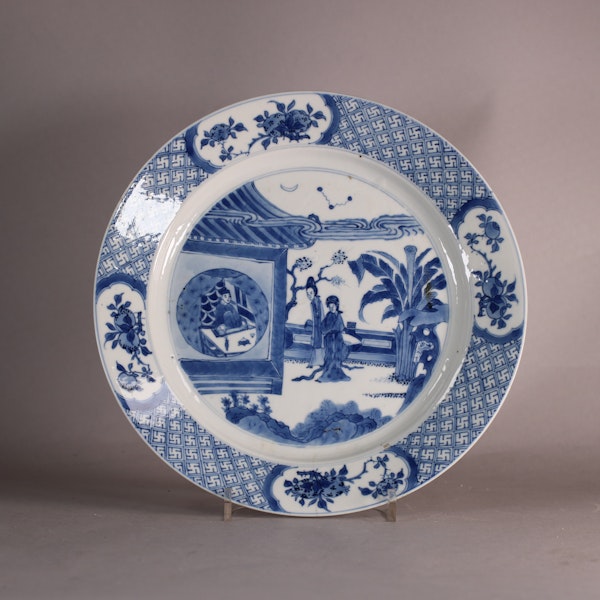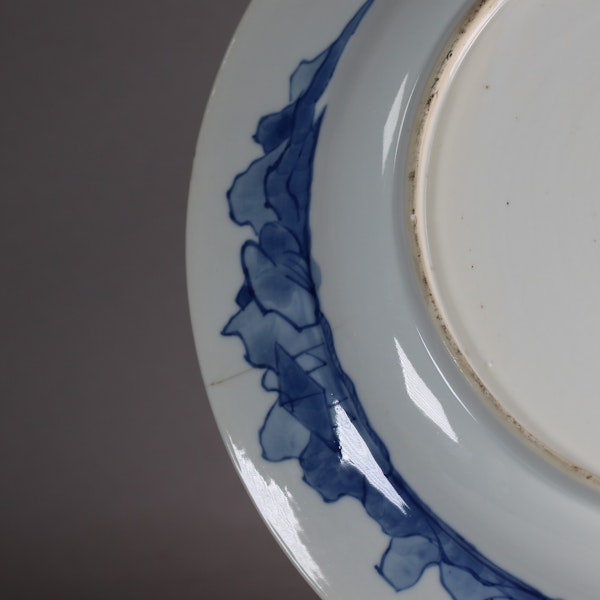Chinese blue and white plate, Kangxi (1662-1722)
Chinese blue and white plate, Kangxi (1662-1722)
POA
Description
Chinese blue and white plate, Kangxi (1662-1722), decorated to the central roundel with a scene from the play ‘Xi Xiang Ji’ (‘The Romance of the Western Chamber’) in which Yingying and her maid Hong Niang hear Zhang Sheng playing the guqin; with the two women approaching a pagoda situated in a fenced garden with plantain and rockwork, the scholar seated playing the guqin at his desk visible through a circular window, with the moon, a star constellation and swirling clouds overhead, the rim with four shaped cartouches containing fruiting boughs of peach, pomegranate, persimmon and citrus against a sauvastika diaper ground, the reverse with two rocky islets and boats with an apocryphal Chenghua mark within a double circle to the base.
Diameter: 26.5cm. (10 3/8in.)
Notes:
A plate of similar design can be found in the collection of the Victoria and Albert Museum, London (Salting Bequest C.754-1910).
The Romance of the Western Chamber is a much-loved Chinese tale written in the Yuan dynasty by playwright Wang Shifu (1250-c.1337) and tells of the love between Zhang Sheng and Cui Yinying. Despite setbacks stemming from her family’s disapproval, they meet in secret with the help of Yinying’s maid Hong Niang and eventually marry. The story is one of love overcoming obstacles but also of the virtues of learning, as it is Zhang Sheng’s scholarly brilliance and his passing of the civil service examination that enables the marriage.
The scene depicted on this plate is from Part II Act IV, during which Yingying is entranced by the young scholar's skilful and heartfelt playing of the guqin, exclaiming thus:
‘Hong Niang, what is that sound? […] Concealing myself, I listen again/ At the eastern corner of the wall,/ and find that it is indeed the sound of the strings of the lute [sic] coming from the Western Chamber. /The sound is powerful, like the sabres and spears of the mailed horsemen;/ the sound is gentle, like flowers falling into running water;/ The sound is high, like the cry of the crane at moon-light in the pure breeze;/ The sound is low, like the whisper of lovers at the casement./ He is at his wits’ end, but his sorrow is endless/ Because he is separated from the young person he loves. Before the tune is ended, already I realise its meaning,/ Which distinctly expresses the separation of two love-birds/ It is entirely music without words!’
[Trans. S.I. Hsiung, Columbia University Press: New York and London, 1968]
| item details | |
|---|---|
| Material and Technique | Porcelain with underglaze cobalt blue decoration |
| Origin | Chinese |
| Period | 18th Century |
| Condition | Very good |
| Diameter | 26.5cm. (10 3/8in.) |
Product REF: W671






